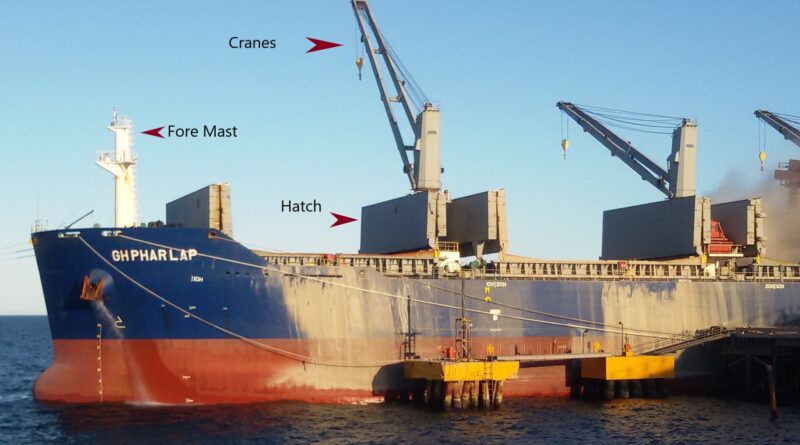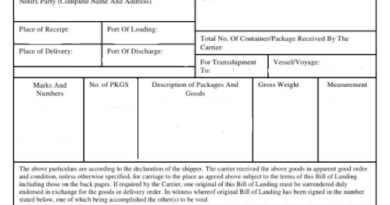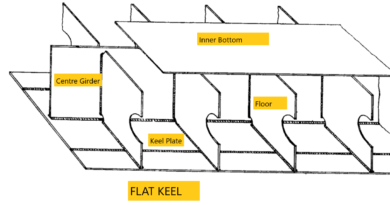What is ship sweat & cargo sweat
Contents
What is ship sweat & cargo sweat.
What is ship sweat & cargo sweat ?
Sweat:
When a ships travels from port A to port B, where there is a climate change between both these ports.
When the air is humid, moving from a warm tropical zone to a cold winter zone, or from cold winter zone to warm tropical zone the difference can cause changes which can cause sweat on the cargo(moisture on the cargo).
Such cargo which tends to absorb moisture from the air are more in risk, cargo like steel bars, rolls, plates can get damage by corrosion.
What is Cargo sweat ?
Cargo sweat –
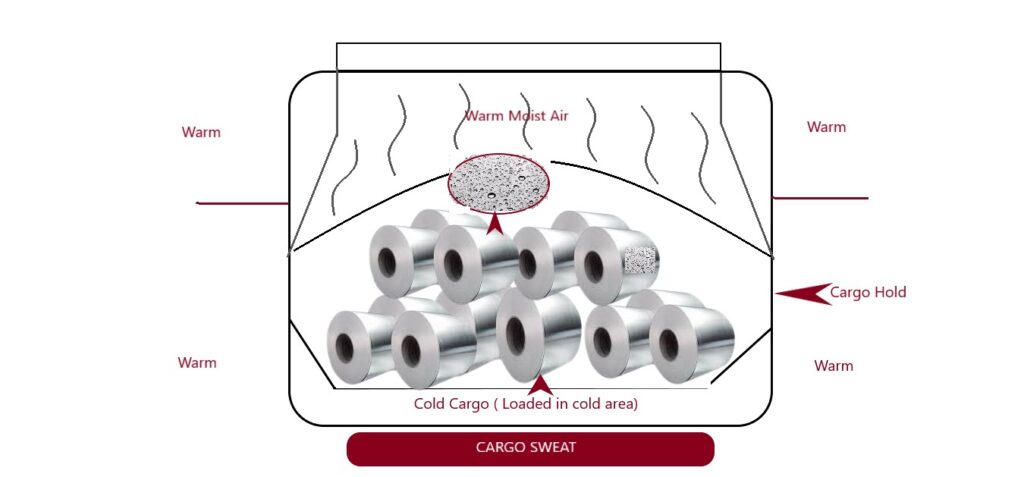
Cargo sweat forms when the ships loads cargo in cold region and then Cargo is transported to hot region.
When warm and moist air enters into the cargo hold and condenses on the exposed surfaces of colder cargo ,the air starts cooling and water droplets starts depositing on the surface of the cargo.
Vessels carrying products like timber,sugar,tabacco, cotton, coffee, cocoa etc have a natural moisture inside them,and have the tendency to increase the cargo sweat,thus resulting in damage of cargo.
Dew point- cargo sweat forms when the temperature of the cargo is less than the dew point of the air which surrounds the cargo.
What is Dew point ?
When the air is cooled below saturation, it becomes saturated with water vapour and condenses to form water, this water is called as dew
when cooled at constant pressure and temperature when relative humidity is achieved to 100% ,the air cannot hold more water in the form of gas.
What is Ship’s Sweat ?
Ship’s Sweat:
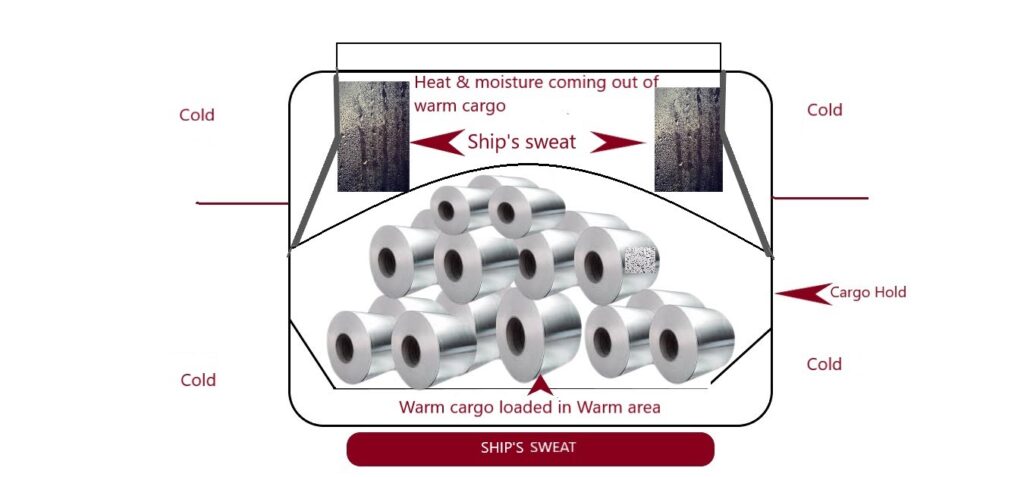
Ship’s sweat is form when the ships loads cargo in hot region and then Cargo is transported to colder region
When warm and moist air comes in contact with cold surface of the vessel, the air starts cooling resulting in the formation of ship’s sweat(condensation) ,the sweat on the plates of the cargo hold can drip down to cargo.
Cargo can be damaged by the water droplets dripping from the overheads (underside of hatch cover) or from ship’s side or tank top of the hold where the cargo is loaded.
The damaged cargo is not acceptable by the receivers at the discharge port.
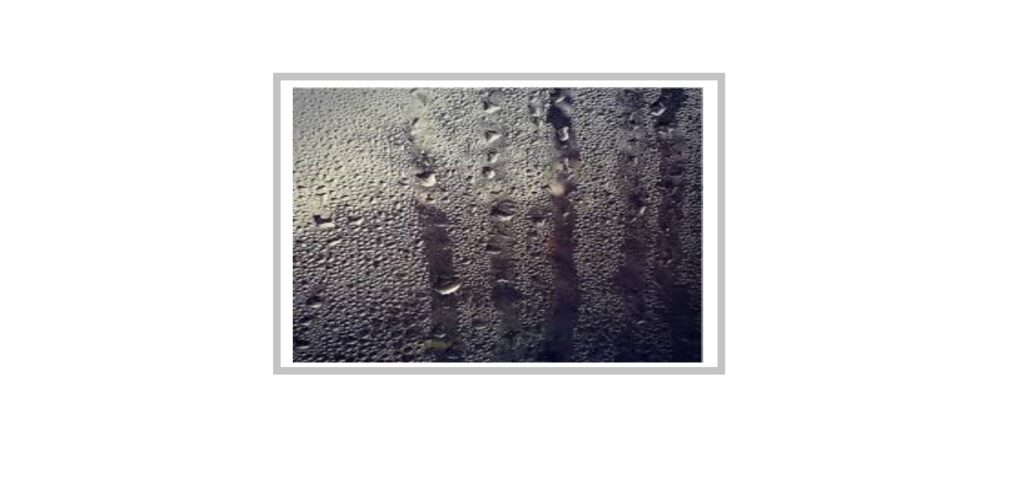
Ship sweat can also formed when the cargo inside the hold is hot and during transportation the ship enters cold territory, the sea water which is cold can cause same effect as cold air resulting in the formation of ship’s sweat.
Ship sweat mostly occurs underside of the hatch covers, tank top, side bulkheads of the cargo holds.
Related Article: Anchoring a ship
Related Article: What are hydrofoil Boats
What is Humidity & Relative Humidity?
Humidity is the amount of moisture or water present in the air in the form of water vapors.
Relative humidity is the percentage of the moisture against the highest possible level of moisture in the air at a specific temperature.
What are the ventilation rules for cargo hold?
The dew point temperatures should be measured and compared.
The dew point of the air and the dew point of the air inside the hold.
VENTILATE– If the dew-point inside the hold is higher than the air dew-point outside the hold.
DO NOT VENTILATE -If the dew-point inside the hold is lower than the air dew-point outside the hold.
The most important factor is to keep the dew point of the air inside the cargo hold below the temperature of the hold plating & the cargo to stop the formation of ship and cargo sweat.
The officer must take recordings on regular interval and should monitor the
Cargo hold air dew point,
The atmosphere dew point and
The sea temperature, with recordings being taken on a regular basis.
The dew point of the atmosphere can be ascertained by use of the wet and dry thermometers .
DO NOT VENTILATE
Not to ventilate the ship’s hold -Ship moving from Cold to Warm climates , as the ship enters warm region warmer air from outside could cause sweat to form on the colder cargo, let the temperature of the air within the cargo hold is allowed to warm slowly-slowly.
VENTILATE
Ventilate the ship’s hold- Ship moving from Warm to Cold climate, let the cooler air enter the cargo hold as it reduces the risk of the warmer moist air inside the cargo hold(cargo loaded in warm conditions) being cooled below its dew point by the ships hull which is exposed to cold sea and cold air temperatures and thus can subsequently cools it.
Three Degree Rule
Three Degree Rule –At the time of loading regularly cargo temperatures should be recorded.
How to prevent ship sweat and cargo sweat
Ventilate the hold-
• During voyage if the atmosphere dry bulb temperature is at least 3ºC cooler than the average temperature of the cargo when loaded.
• Dew point of the air contained inside the cargo hold is higher than the dew point of the atmosphere.
• if the vessel contains hygroscopic products & travels from hot climates to cold climates.
• During night air temperature is low and more chance of ship’s sweat occurrence.
Do not ventilate the hold-
• If the the dry bulb temperature of the air is less than 3ºC cooler than the average temperature of the cargo when loaded.
• If the dew point of the air inside the cargo hold is lower than that of the atmosphere
• During rough weather, as rain and salt water spray can enter into cargo hold and ventilation can spread it, so until weather improves ventilation should be kept on hold.
Hygroscopic cargo
Hygroscopic cargo -the cargo which contains moisture naturally.
Example of Hygroscopic cargo -Plant products, grain, flour, tobacco, which absorb and release water within the cargo.
The excess water can further spoil the cargo by spreading moisture in the cargo.
Non-Hygroscopic cargo
Non-hygroscopic-The cargo which has no water content in it, but such cargo can also get spoil in the moist environment.
What is ship sweat & cargo sweat
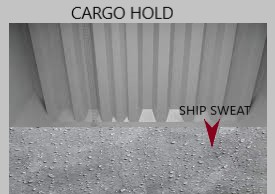
Related Article: Port side and starboard side of a ship

